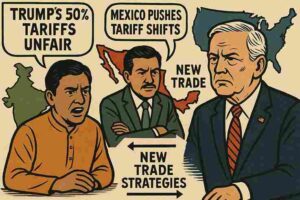The United States is experiencing a wave of bankruptcies not seen in more than a decade. By the end of July 2025, a total of 446 large companies had filed for bankruptcy, surpassing even the early pandemic years. July alone recorded 71 bankruptcies, marking the highest single-month total since 2020.
Among the fallen are well-known names that once dominated malls and shopping lists. Forever 21, Joann’s, Rite Aid, Party City, and Del Monte Foods have all been forced to seek court protection. Claire’s, the fashion accessories retailer, has even re-entered bankruptcy proceedings after a previous attempt at restructuring failed, joining what analysts call the “Chapter 22” club—companies that relapse after an earlier Chapter 11 filing.
The impact is being felt most strongly in industries tied to consumer spending and industrial production. These are sectors especially vulnerable to rising borrowing costs, fragile supply chains, and increased trade pressures. Many firms that relied on imported goods or operated with slim profit margins have been hit hardest.
The situation has drawn attention to former President Donald Trump’s tariff policies. While originally designed to protect American manufacturing, the measures have also added costs for companies that depend on imported parts or overseas production. The timing of these bankruptcies has led many to question whether the very policies meant to strengthen domestic business may have contributed to their collapse.
Despite the turbulence, stock markets have remained surprisingly steady. Economic growth continues at around 3 percent, and hopes of a Federal Reserve rate cut later in the year are keeping investor sentiment positive. Yet the contrast between strong headline numbers and the collapse of household brands paints a picture of an economy with hidden fault lines.
What remains to be seen is whether these bankruptcies represent a natural cycle of old businesses giving way to new models, or whether they are warning signs of deeper structural weakness. As American consumers shift more toward digital platforms and new shopping habits, the corporate map may continue to change—leaving behind familiar names that once felt unshakable.




